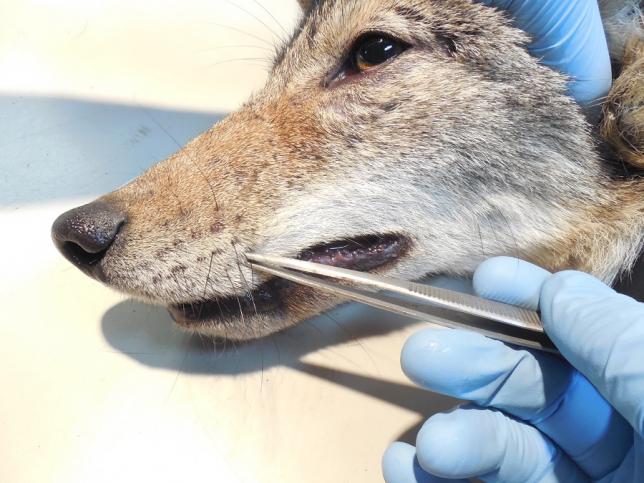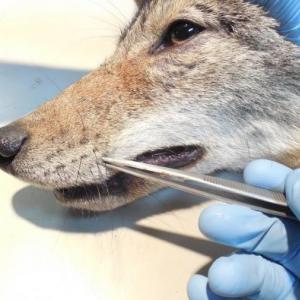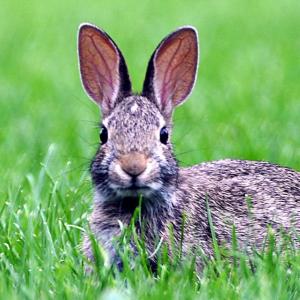
A whisker sample is taken from an anesthetized coyote for dietary analysis
One of the most frequently asked questions of any wildlife species is what do they eat? The question is simple in nature but has more complex reasons for being asked because it can alter wildlife management protocols. Understanding the answer means employing the latest scientific techniques to identify food types. Historically, biologists have relied on scat surveys, visuals, and necropsies to determine what makes up an urban coyote diet. While these results are valuable, they are often unspecific to individuals; therefore behavioral and movement data cannot be paired with a known animal's diet. These surveys may also under-represent the quantity of human foods present because items are often hard to detect once ingested.
Partnering with Dr. Seth Newsome at the University of New Mexico, this new project takes whisker samples collected from coyotes at their original capture date and processes the samples using stable isotope analysis. By investigating comparative food sources, Dr. Newsome can identify ratios of elements common to specific food types and then plot an animal's diet habits according to type and season (given a standard timeline for whisker regeneration). This also allows the team to study trends in individualistic behaviors because each animal's specific diet can be compared with what is known about the animal from location tracking data. Therefore, researchers can begin to understand if what coyotes eat is specific to the environment where they live (whether or not a coyote who lives in downtown Chicago is consuming natural or anthropogenic resources). Turns out, they are eating like individuals.
A paper covering initial findings was published in Oecologia.


